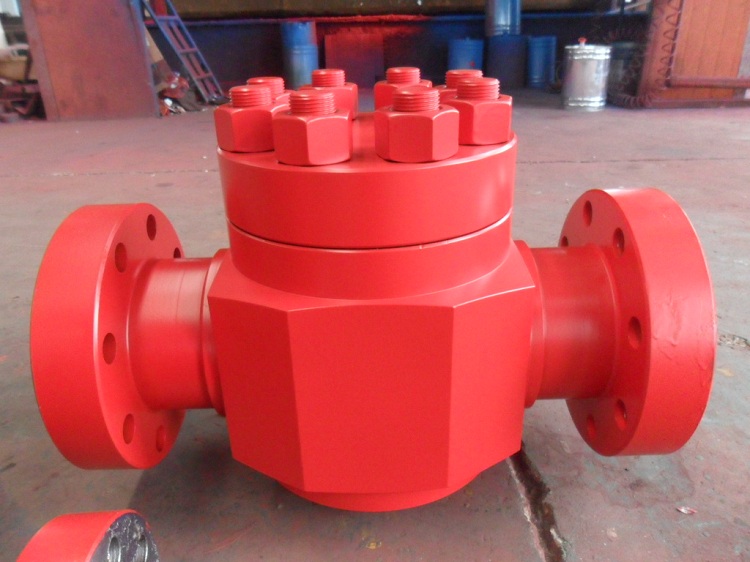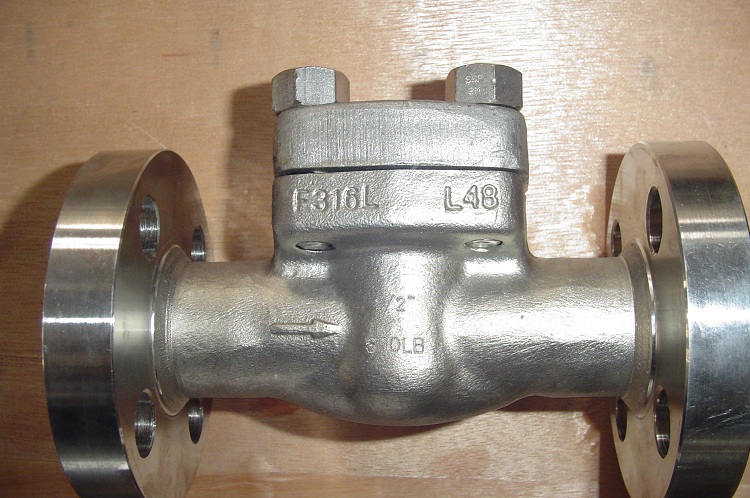Flanged check valve - a device that is installed on pipelines to provide one-sided direction of the transported working medium. The design, the installation of which is carried out with the help of a flange, provides for automatic operation that stops the transported stream, usually liquid, if its direction of movement changes to the opposite or when a water hammer occurs in order to weaken its effect.
Content
What are the design features of flange valve
Flanged valves can be installed both on horizontal pipelines and on vertical ones, which are designed to pump:
- sewage;
- acids;
- sea and fresh water;
- oil and its refined products;
- alkaline solutions.
The efficiency of a device mounted using a flange is very high, which is explained, in many respects, by the simplicity of its design and principle of operation. The basis of a rather simple device is the housing, for the manufacture of which steel or cast iron is used, in which the locking element is located. It is possible to adjust the action of a special spring, due to which the action of the locking mechanism is provided.
Thanks to the spring, the opening of the locking element of the device can be made only in one direction, corresponding to the direction of flow of the substance transported through the pipeline system. The transported substance, having created sufficient pressure in relation to the locking element held by the spring and opening it, begins to move in a given direction. When the pressure drops in the pipeline system, as a result of the automatic operation of the locking mechanism, the cross-section of the pipeline is blocked, which means that the substance moved along it cannot begin to move in the opposite direction.
The selection of a flange shutter depends on the purpose of the device, according to the design features it can be:
- turning. The principle of operation is the use of an intra-valve steel slam-shut disc fixed on an axis with a spring. When the valve is open, the disk is parallel to the direction in which the transported substance is moving, in the opposite position - perpendicular. The disadvantage of a simple and inexpensive design is the excessive sharpness of the flap of the disk, resulting in premature wear of the seat. Therefore, the advanced devices are equipped with a special mechanism, which is designed to ensure that the closure is carried out smoothly, without impact, which led to a significant increase in their cost. Another limitation of the use of so-called shock-free check valves for flanges is that they can only be placed on a horizontal pipeline;

Each valve model has design features on which the installation method and operation of the device depend.
- the reverse is of a lifting type. The flanged check valve was equipped with a special slide valve, which is assigned the function of a shut-off component. The pressure of the transported substance causes vertical lifting of the special spool. When the pressure drops, the spool moves vertically in the opposite direction, blocking the cross section of the pipeline and preventing the beginning of the movement of the transported substance in the opposite direction.
Note! The lifting flange shutter can only be installed vertically, which follows from the specifics of the design.
- the reverse - with the presence of a ball locking element. The use of a special spool as a locking element - a ball of a sufficiently large size, does not allow the installation of a ball check valve to perform the function of an interflange valve;
- double bicuspid, used, as a rule, as wafer. The design used two simultaneously slamming shutters connected to the springs. A valve of this design is inherently compact, since the shutter doors are small in size;
- the receiving reverse equipped with a grid. The use of devices equipped with a filter mesh is resorted to on devices installed in wells that are used to pump liquids or gases from underground formations. The presence of a filter prevents large foreign particles from entering the system.
Advantages and disadvantages of installing a check valve
To operate large-diameter pipeline systems today is unthinkable without the use of check valve flanges. There are two types of such devices:
- flanged;
- interflange.
In interflange devices, the main element is placed between the flanges, the parts for fastening are present in a minimum quantity - in order to tighten the flanges, threaded rods are used.
Note! As a rule, it is customary to install non-return flanged valves on trunk lines that are operated with significant load. Therefore, the constant movement of the transported substance has a significant impact on the condition of the internal elements of the pipeline, leading to their accelerated failure.
The installation of the devices in question is associated with certain advantages:
- due to the compactness of devices, as a rule, having small dimensions, their use is possible in pipeline systems at various sites;
- even if there is a large amount of harmful impurities in the transported substance, they function properly;
- can be used on trunk pipelines of significant diameter.
Perhaps the only significant drawbacks of the devices is the initiation by them of a hydraulic shock that occurs when the shutters are slammed. The increase in pressure in the pipeline caused by the abrupt closure of the blocking device provokes a water hammer affecting the pipeline system. If the impact of water hammer is not able to lead to serious malfunctions in the functioning of the whole system and / or its individual components, then you can do with the installation of simple check valves, not exceeding, as usual, the diameter of 400 mm. In other cases, installation of shock-free devices is desirable.

The shock-free type device has an important advantage - it does not provoke water hammer during operation
Installation of a check valve
There are several ways to install check valves by applying:
- coupling;
- welded joint;
- flange.
However, large-diameter pipeline trunk lines are equipped with devices that are attached exclusively with flanges.
The design of the check valve includes connecting flanges with holes for mounting nuts (flange dimensions are established by GOST 12820-80). Installation is associated with strict adherence to its technological sequence. Installation should only be carried out by specialists of the appropriate qualifications upon receipt of special clearance and training. The sequence of execution is as follows:
- When preparing to begin the arrangement, they stop supplying the transported substances to the pipeline system either as a whole or in a separate insulated area where work will be carried out.
- A check is carried out for the manifestation of the full compliance of the installed equipment with the climatic conditions under which work is carried out.
- Initially, the flanges are attached to the remote element of the pipeline. When performing this operation, it is strictly necessary to parallel the position of the connected elements.
- Next, the check valve itself is fixed, installed by the lid up.
Important! Before supplying the transported substance to the pipeline system, the correctness of all the connections, the immobility of the position of the device body and the stability of the collapsing disk are meticulously checked.
The mass distribution of flanged type check valves is explained by their relevance, since the installation of these devices allows solving the problems of safe functioning of pipeline systems, preventing the occurrence of phenomena such as reverse flow direction of the transported medium and hydraulic shocks. With the full compliance of these devices with the intended purpose, they also have such significant advantages as the simplicity of the device, combined with high reliability, and relatively low cost.







